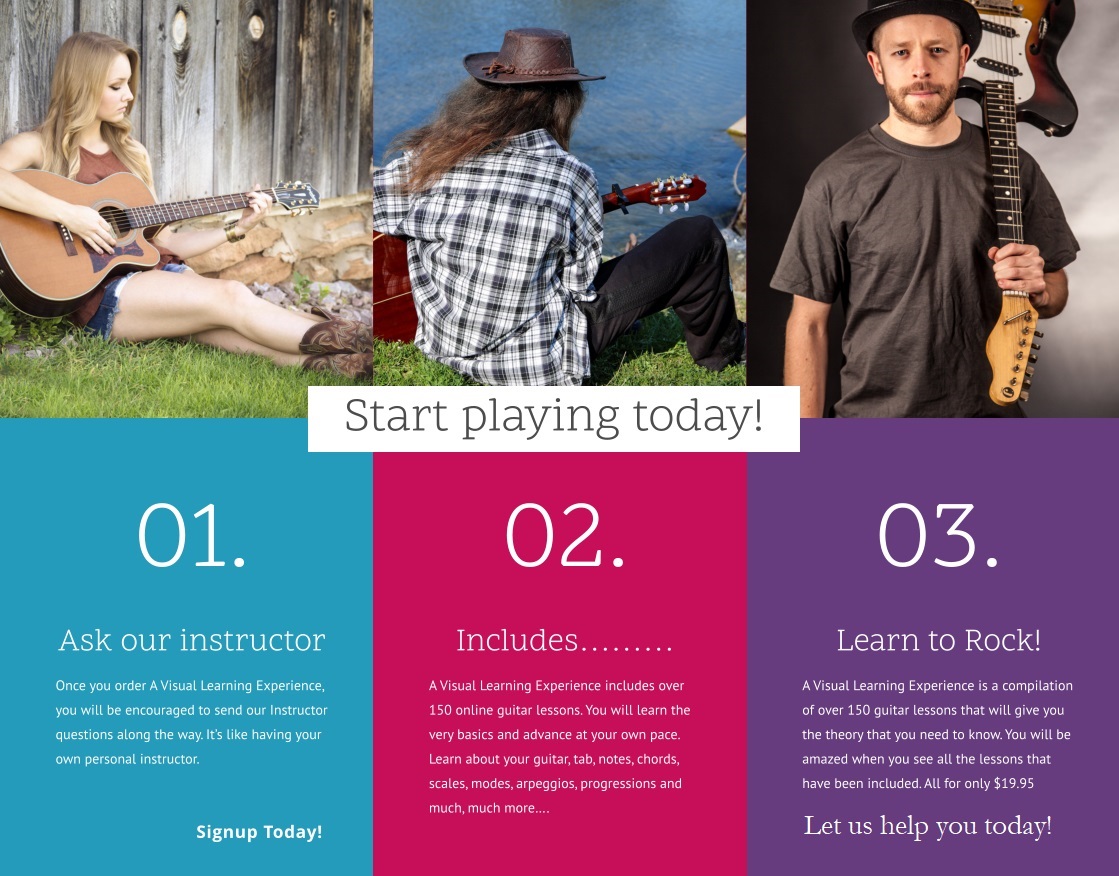Austin’s Guest Post Article
Consordini Musical Instruments
Guitars – Strumming and Chords
When it comes to guitars, the first thing you learn is what to play, which chords and songs are easy, and where to start. But often what’s glossed over is the more important information, that being “how to strum”, and how to put chord progressions together.
Anyone can learn how to play an Em or AMaj chord, in fact those are the first ones you’ll learn. But it’s learning how to make them sound interesting when you play them, or what to play afterwards that changes you from a beginner guitarist into an expert, and that’s where this article comes in.
Strumming – It rings a bell
The first stage of learning guitar playing is learning strumming. Not the “hold the pic, strum down” technique, as that’s a basic for learning guitar chords. We’re talking about how to improve your strumming, transforming your songs from mediocre campfire songs, to rock hits!
There are a few things you can do to improve your strumming though, from basic rhythmic recognition, to hitting particular strings on each strum, as you will see below.
Feel the beat
In any song, there’s what drummers call “the hook”. It could be a rapid hi-hat trill, or a solid “four on the floor” kick beat. This applies to guitarists too, as the first step in improving your strumming is to be able to copy and play different rhythmic patterns. Have a listen to various songs and copy the main beat.
In this case, focus on the guitar, and see if it’s a straight “1-2-3-4” beat, or if it’s “1- – 3-4” or something else. You get marching band beats, waltz timing (a signature “1-2-3” that people dance to), or the rapid-firing punk beat, which will tire your arm out within a minute if you’re a newbie guitarist. Practicing rhythms is the first step to getting your strumming to adapt smoothly.
Just relax
The next tip that all guitarists recommend for strumming, is to never lock your wrist. Although they say “grip the pick tight”, often newbies tend to stiffen up from fingertips all the way to their elbow. The easiest way to get your songs to flow, is to relax your wrist. From your elbow to your shoulder should be firm, but from your elbow to wrist, should be free-flowing.
How does this help? If you think about how the strumming action goes, you need to run the pick down all the strings, but if your wrist doesn’t relax and change angles, then your guitar pick will get stuck on the way up, which is where the relaxed wrist comes in to play. As soon as you’ve played the last string on the guitar, relax your wrist and it will automatically “flick” downwards, which is the signal to bring it back up.
Practice your aim
As you have played chords on your guitar already, you will know that some chords only use the top or the bottom strings. This means that (in the case of D major) the two lowest string can often be ignored, and if you don’t play them, it changes the entire sound of the chord.
Have a look at the chords you play, and see which of them require all the strings, and which ones you can play without the top or bottom strings. Then practice playing the chord whilst hitting all the strings, and then only the affected ones. Doing this will increase your accuracy when playing, as well as help you gain the skills necessary to play advanced songs with ease.
Keep moving
The last tip for strumming (and this one ties in with the first tip nicely), is to keep your hand moving. If you’re playing creatively, and skipping beats to add a nice rhythm to your song, don’t let your hand freeze. Keep it moving in time with the rest of the music, even if you’re not playing a note.
Being able to keep time is vital for any musician, and it will help you when you need to come in strong at the beginning of a chorus, or the end of a bridge.
Guitar Chords
Now that you have a basic idea on how to get your strumming smoother, let’s have a look at how to get your chords smoother. Yes, it’s great to be able to strum fast, or creatively…but it doesn’t help if you can’t change chords fast enough to match your strumming. That’s where this next section can help you.
Stay on time
The first step, is to start counting out loud. Pick three chords, let’s say we’re playing a regular blues set of G, C, and D. Play the G four times, then the C twice, then the D twice, then the G four times. Count each time out loud. Next, try the G twice, the C four times, the D twice, and the G twice. Now try playing the G once, the C three times, and the D four times.
You should be getting the picture by now. By counting the rhythmic patterns out loud, it will help you find when and where you need to start.
Transitions
The next tip for guitar chords, is to practice quick-playing a chord before the next one. What we mean by this, is if the music says “G->C”, then play a G, and a quick “B” for half a beat before the “C” comes in. This will teach your fingers to rapidly change and re-change.
Being able to switch between chords comes with time, and a lot of practice. But using this method will help you in getting to that point.
The Final Word
So now that you have more insights in how to strum, and playing chords, the last bit of advice we can give you, is to play as many songs as you can, and never stop practicing!



